Director James Gunn’s new Superman film starring David Corenswet is speeding our way faster than a speeding bullet, but did you know some of his early adventures were reprinted in Britain shortly after the character’s debut in America in Action Comics?

The first Superman strips were written by Jerry Siegel, drawn by Joe Shuster, and published in the United States in Action Comics in April 1938 by DC (or National Allied, as the company was then called).
Some of the early strips were quickly reprinted in Britain, Superman making his first UK appearance in 1939, in the boys weekly, Triumph, a title launched in 1924, published by Amalgamated Press, debuting in No. 772, in August 1939. Triumph serialised Superman weekly, in issues 772 to 792, and 807 to 814, the final issue, when the comic merged with The Champion due to wartime paper shortages .
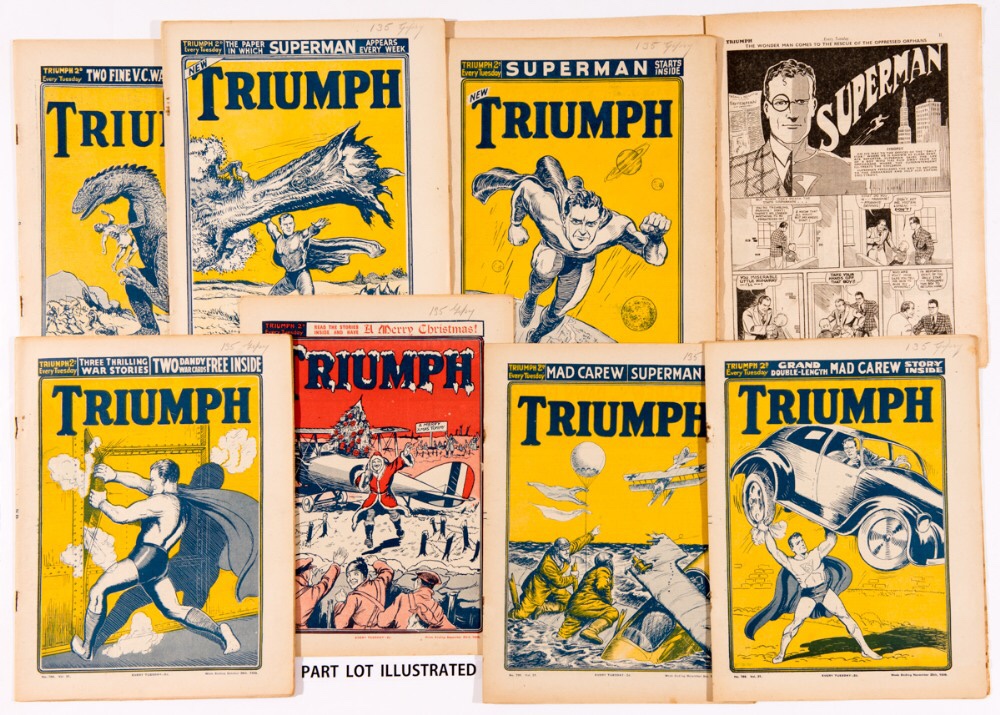
As Mark Seifert noted for an article for Bleeding Cool back in 2019, the strips were reformatted with introductory half-splashes added, drawn by John “Jock” McCail (1894 – 1962), who also provided several Superman covers for Triumph.
McCail’s career began working for DC Thomson, for The Courier newspaper, but, as Lambiek notes, he settled in London as a freelance artist in 1925 and began an association with Amalgamated Press, contributing to titles such as Joker (“Abdul the Desert Robber”), Sparkler (“The White Knight”), Comic Cuts (“Pantha the Bandit”) and more. During World War Two, he and his artist brother Bill McCaill worked for publisher Gerald Swan, contributing to titles like Slick Fun, Thrill Comics, and others.
“They are the first Superman comics to be published outside the United States,” he noted, “and because they are based on the comic strip source, they also contain the first more complete origin of the character to be published in comic book form anywhere in the world.”

The debut cover for the run, Triumph 772 is also the first time, anywhere, that Superman is seen to be flying, rather than leaping, a power not previously acknowledged, and ahead of the debut of the Superman radio show on 12th February 1940.
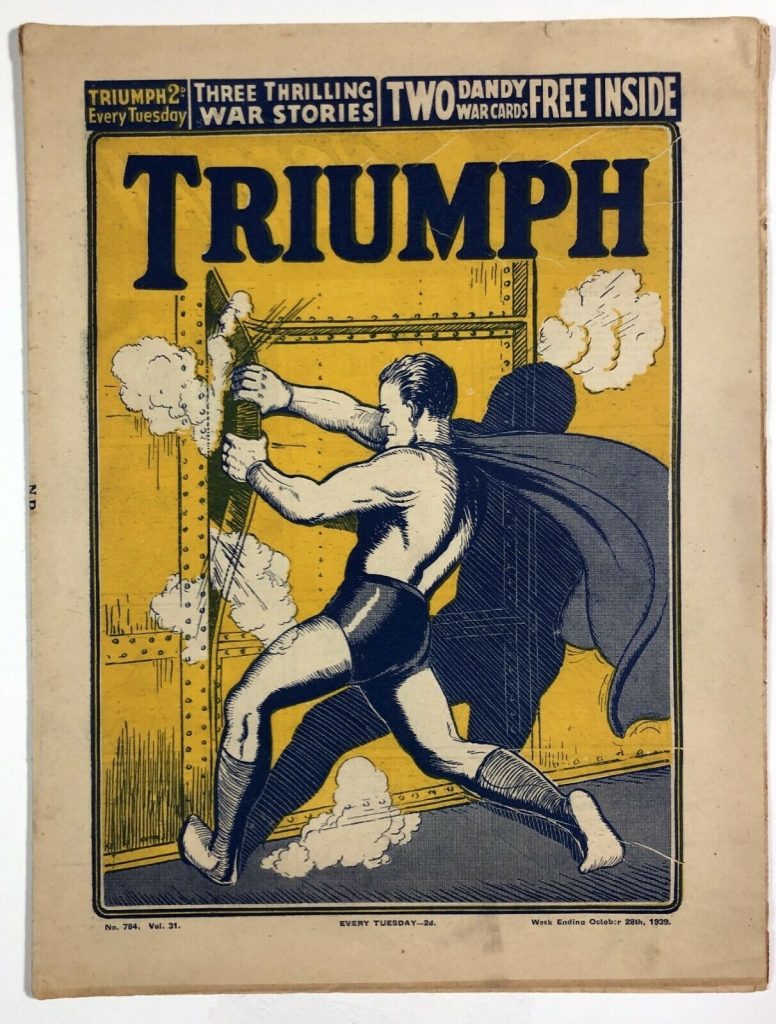
Superman has been reprinted in many British titles since then, by a range of publishers – among them, Alan Class, Brown Watson London Editions, Odhams and World Distributors.
He would, for example, enjoy a much more popular run in the pages of Radio Fun, that started in 1959 and continued for a while when that title merged with Buster in 1961. He also featured in the Super DC comic in 1969, which lasted for less than a year, running for just 14 issues, and one annual. In the 1980s, London Editions included the son of Krypton in The Super Heroes Monthly.

While primarily reliant on reprinted art, some London Editions superhero titles (many edited by Brian Clarke), such as the short-lived The Super Heroes Monthly (edited by the late Vanessa Morgan), launched in 1980, provided an avenue for dramatic superhero cover art by artists such as Alan Craddock.
British interest in superheroes isn’t confined to Superman of course. “Super powered” heroes appeared prominently in DC Thomson titles in the 1920s, for example, long before their American counterparts. Professor Chris Murray has documented many of them in his book, The British Superhero, published in 2017. He identifies the origins of the superhero and supervillain in nineteenth-century popular culture such as the penny dreadfuls and boy’s weeklies, and in science fiction writing of the 1920s and 1930s.
Superman, “Super Anarchist”?
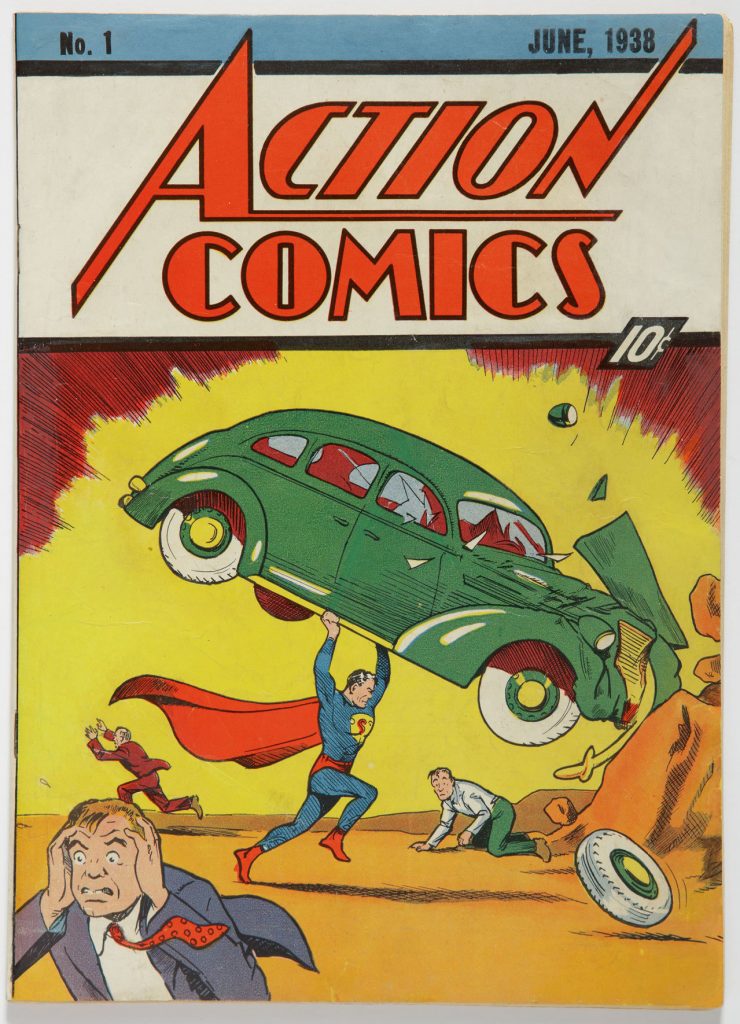
The surprisingly radical origins of Superman, the all-American superhero, are the focus of a recent article by Nicholas Barber for BBC Culture. Barber notes the All American Hero was a far more unruly, and in some ways far more modern character.
In the article, noting his origins and the changes to the character his publisher made as he grew in popularity, comic creator Mark Waid describes him as a “Super Anarchist”.
“I had no idea the character was like that until I started writing my book,” says Paul S Hirsch, author of Pulp Empire: A Secret History of Comic Book Imperialism, published last year. “But it blew my mind when I saw it. He’s essentially a violent socialist.”
The article notes the earliest issues of Action Comics bear out this assessment. When there are wrongs to be righted, Superman knocks down doors and dangles suspects from fifth-storey windows, and he makes hearty jokes while he’s doing so: “See how easily I crush your watch in my palm? I’ll give your neck the same treatment!”
The early characterisation of Superman chimes with a further British connection to Superman, of course. Co-creator Jerry Siegel also wrote many of the anarchic adventures of anti hero, The Spider, for Britain’s weekly comic, Lion.
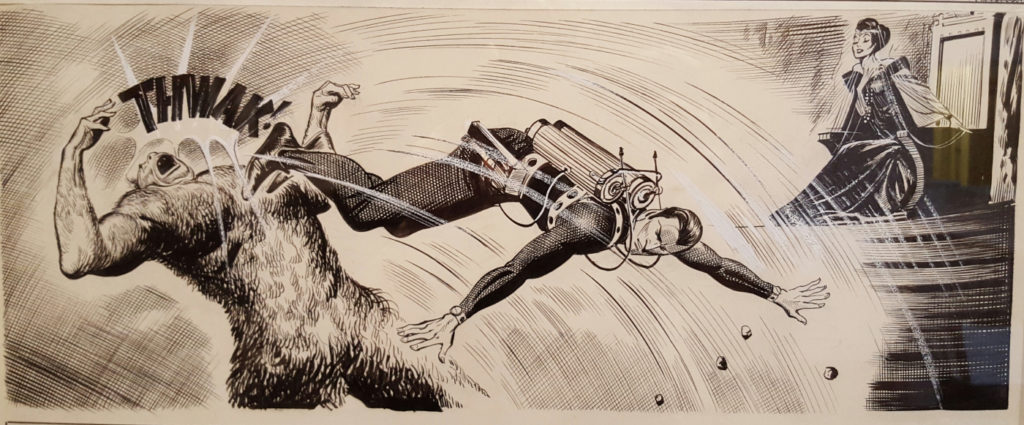
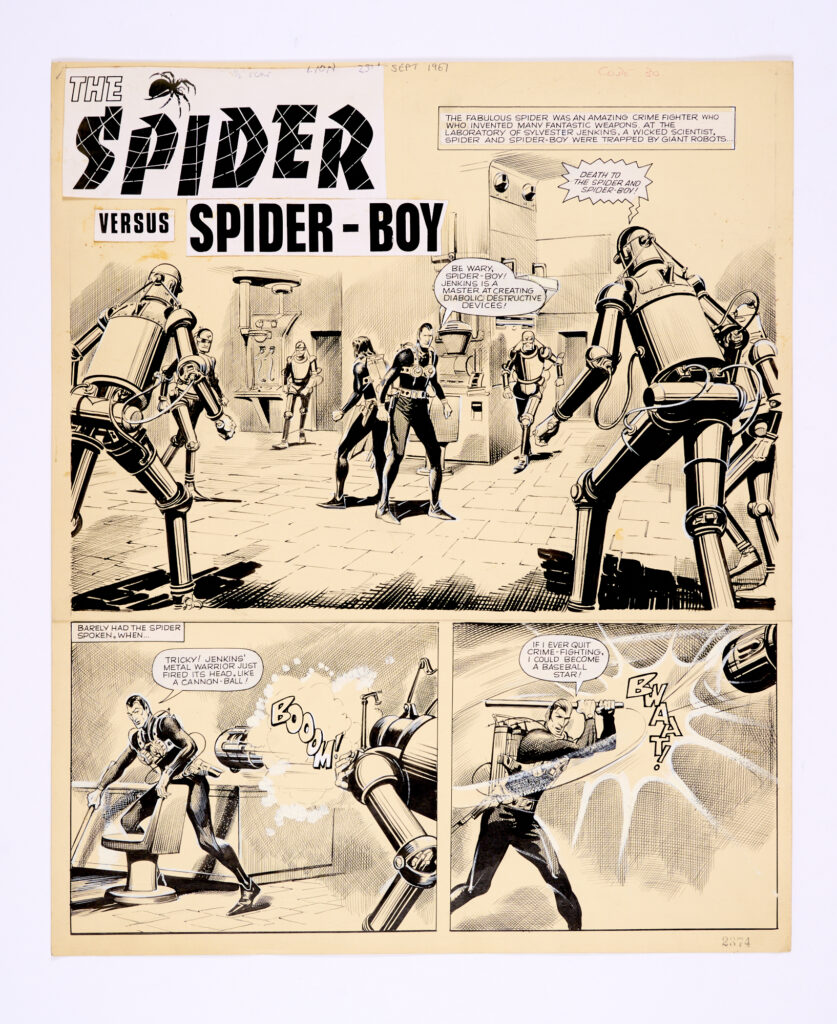
Created by writer Ted Cowan and artist Reg Bunn, “The Spider” began as a supervillain before becoming a superhero, appearing in Lion with the issue cover dated 26th June 1965 and continuing until the issue cover dated 26th April 1969. His adventures were reprinted in Vulcan in the 1970s, and he has enjoyed numerous appearances in recent titles published by copyright owners Rebellion in recent years, who have also collected many of his original stories.
Jerry Siegel took over the writing of the character with his third adventure, and would write the bulk of his original adventures.
As The Spider grew in popularity, so too, was the character transformed, becoming superhero rather than villain.
The new Superman film is in cinemas from this Friday, 11th July | Official Website
Head downthetubes for…
• Bleeding Cool: Did a UK Publisher Make Us Believe Superman Could Fly in 1939?
• The Comic Book Price Guide: Triumph
Issue One: 18th October 1924 – Issue 814, 25th May 1940 (joins The Champion)
The UK publisher Amalgamated Press licensed material from the McLure Syndicate’s newspaper strips, often re-formatting them to fit the pages of Triumph and sometimes adding introductory half pages. Arguably the first UK appearance, technically speaking, of Superman is in the ad in issue No. 771 showing the front cover for issue No. 772. The date was July 29th 1939, just 13 months after the debut of Superman in Action Comics #1 in June 1938.
• UK Comics Fandom Wiki: London Editions Magazines
• downthetubes: Comic Creators Project UK profiles “Spider” artist Reg Bunn
• BBC Culture: “He was a violent socialist”: How Superman started out as a radical rebel
• Wacky Comics: Superman in the UK
• Comics placement in Movies: The Wrong Arm of the Law
Spot a copy of Buster’s take on “Superman”!
Books…
• Superman The Ultimate Guide The Man of Steel (AmazonUK Affiliate Link)
Discover and explore the world of the original and greatest of all Super Heroes: Superman, the Man of Steel!
He sprang fully formed and unstoppable from the pages of Action Comics #1 in June 1938. Superman has been a jewel in DC’s crown ever since, fueling a plethora of movies and TV shows.
Packed with spectacular art from the original comic books, this definitive volume brings Superman’s story right up to date, with full details of his latest exploits in major storylines such as The Final Days of Superman, Superman Reborn, and Adventures of Superman: Jon Kent. With in-depth profiles of Superman’s allies and enemies, a detailed timeline, landmark comics, and much more, Superman: The Ultimate Guide New Edition is both a superb guide to a timeless cultural icon – who in 2025 hurtles back on movie screens in Superman – and a prize addition to any fan’s bookshelf.
• The British Superhero by Professor Chris Murrray (AmazonUK Affiliate Link)
Chris Murray reveals the largely unknown and rather surprising history of the British superhero. It is often thought that Britain did not have its own superheroes, yet Murray demonstrates that there were a great many in Britain and that they were often used as a way to comment on the relationship between Britain and America. Sometimes they emulated the style of American comics, but they also frequently became sites of resistance to perceived American political and cultural hegemony, drawing upon satire and parody as a means of critique.
Murray illustrates that the superhero genre is a blend of several influences and that in British comics, these influences are quite different from those in America, resulting in some contrasting approaches to the figure of the superhero. He identifies the origins of the superhero and supervillain in nineteenth-century popular culture such as the penny dreadfuls and boy’s weeklies and in science fiction writing of the 1920s and 1930s. From the emergence of British superheroes in the 1940s, the advent of “fake” American comics, and the reformatting of reprinted material to the British Invasion of the 1980s, and the pivotal roles in American superhero comics and film production held by British artists today, this book will challenge views about British superheroes and the comics’ creators who fashioned them.
Murray brings to light a gallery of such comics heroes as the Amazing Mr X, Powerman, Streamline, Captain Zenith, Electroman, Mr Apollo, Masterman, Captain Universe, Marvelman, Kelly’s Eye, Steel Claw, the Purple Hood, Captain Britain, Supercats, Bananaman, Paradax, Jack Staff, and SuperBob. He reminds us of the signi cance of many such creators and artists as Len Fullerton, Jock McCail, Jack Glass, Denis Gifford, Bob Monkhouse, Dennis M. Reader, Mick Anglo, Brendan McCarthy, Alan Moore, Grant Morrison, Dave Gibbons, and Mark Millar.
• Pulp Empire: The Secret History of Comic Book Imperialism by Paul S Hirsch (AmazonUK Affiliate Link)
In the 1940s and ’50s, comic books were some of the most popular, and most unfiltered, entertainment in the United States. Publishers sold hundreds of millions of copies a year of violent, racist, and luridly sexual comics to Americans of all ages until a 1954 Senate investigation led to a censorship code that nearly destroyed the industry. But this was far from the first time the US government actively involved itself with comics – it was simply the most dramatic manifestation of a long, strange relationship between high-level policy makers and a medium that even artists and writers often dismissed as a creative sewer. In Pulp Empire, Paul S. Hirsch uncovers the gripping untold story of how the US government both attacked and appropriated comic books to help wage World War II and the Cold War, promote official – and clandestine – foreign policy and deflect global critiques of American racism.
As Hirsch details, during World War Two – and the concurrent golden age of comic books – government agencies worked directly with comic book publishers to stoke hatred for the Axis powers while simultaneously attempting to dispel racial tensions at home. Later, as the Cold War defence industry ballooned – and as comic book sales reached historic heights – the government again turned to the medium, this time trying to win hearts and minds in the decolonizing world through cartoon propaganda.
Hirsch’s groundbreaking research weaves together a wealth of previously classified material, including secret wartime records, official legislative documents, and caches of personal papers. His book explores the uneasy contradiction of how comics were both vital expressions of American freedom and unsettling glimpses into the national id – scourged and repressed on the one hand and deployed as official propaganda on the other. Pulp Empire is a riveting illumination of underexplored chapters in the histories of comic books, foreign policy, and race.
Winner of the Popular Culture Association’s Ray and Pat Browne Award for Best Book in Popular or American Culture
Superman © DC Comics | Triumph © Rebellion Publishing Ltd
Categories: British Comics, Comics, Creating Comics, downthetubes Comics News, downthetubes News, Features, Film, Other Worlds, US Comics

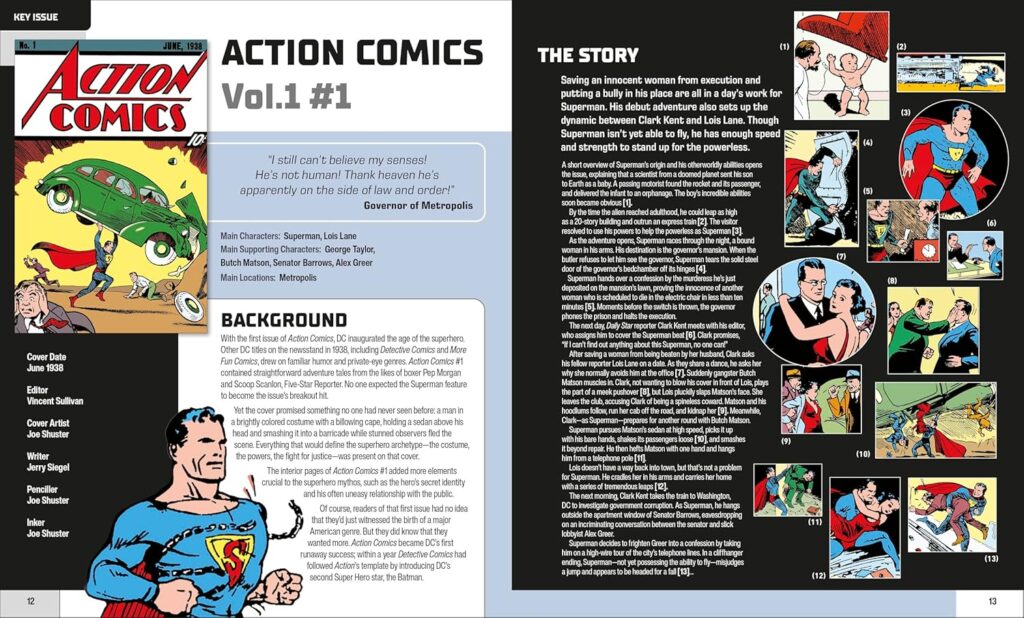
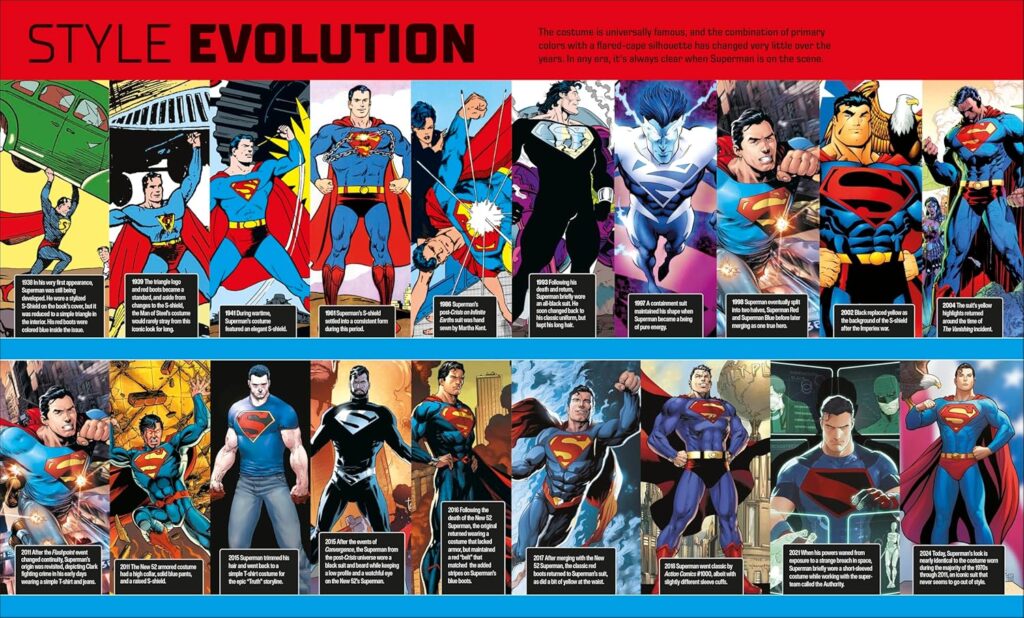
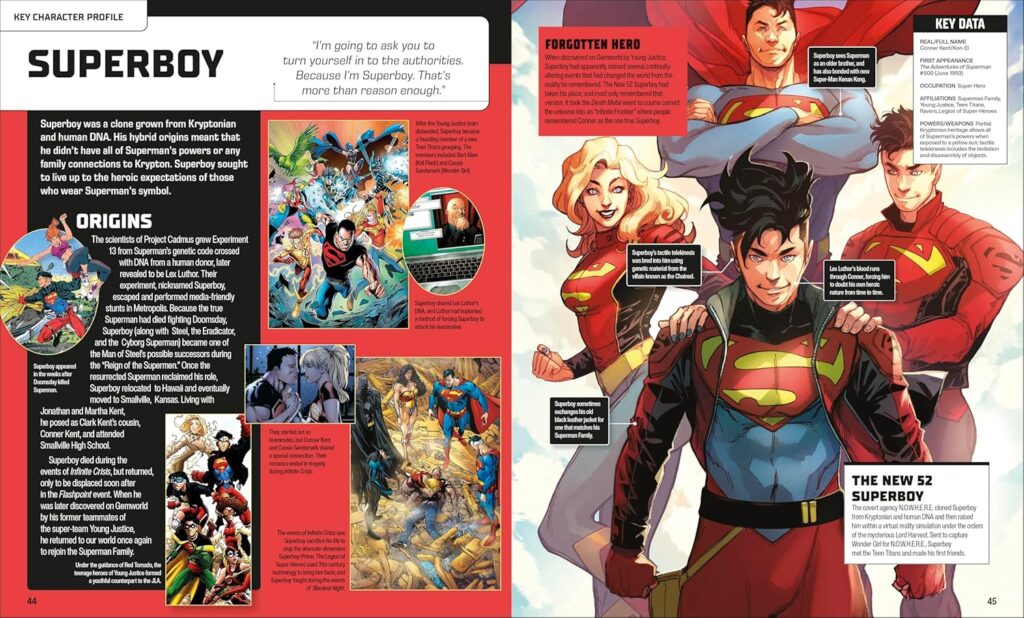
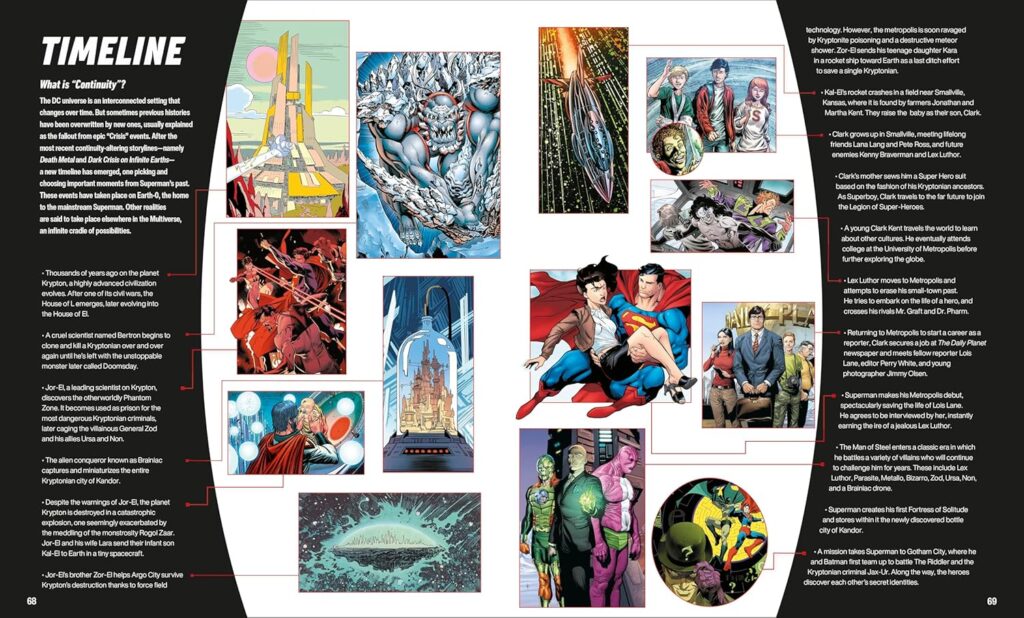
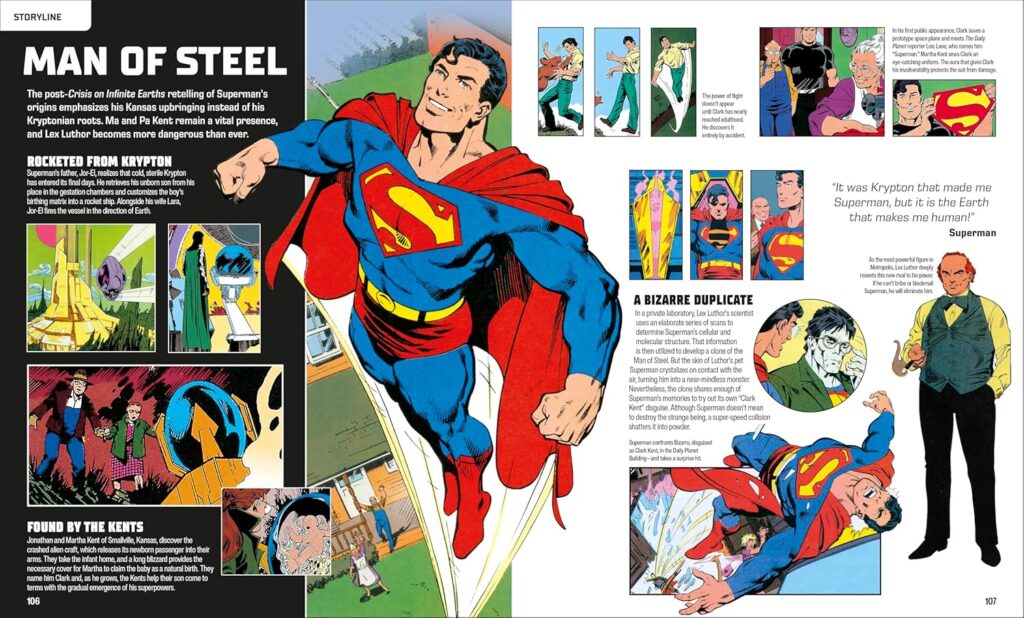
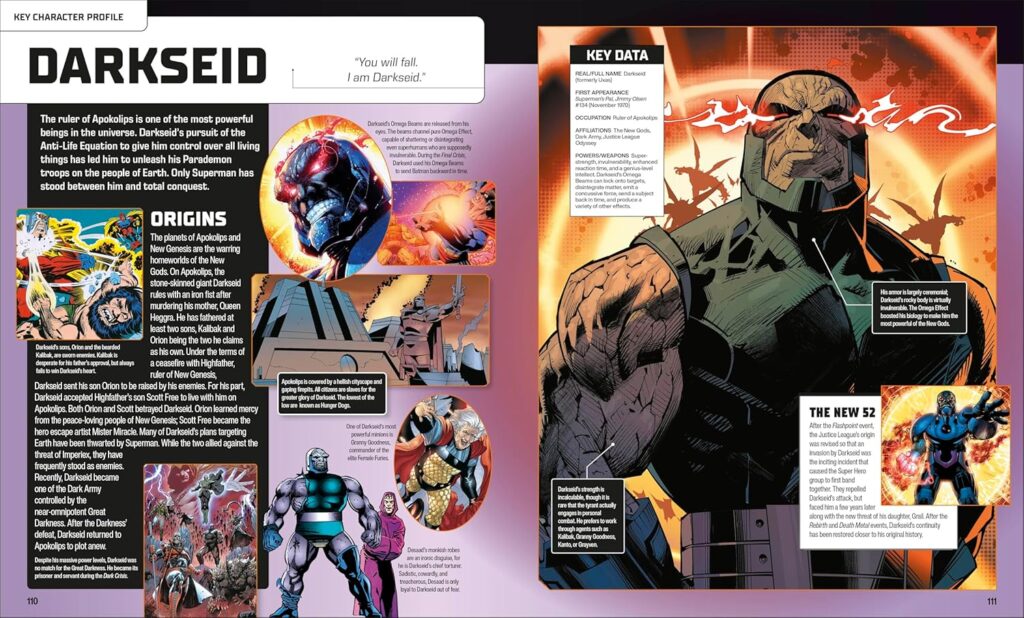
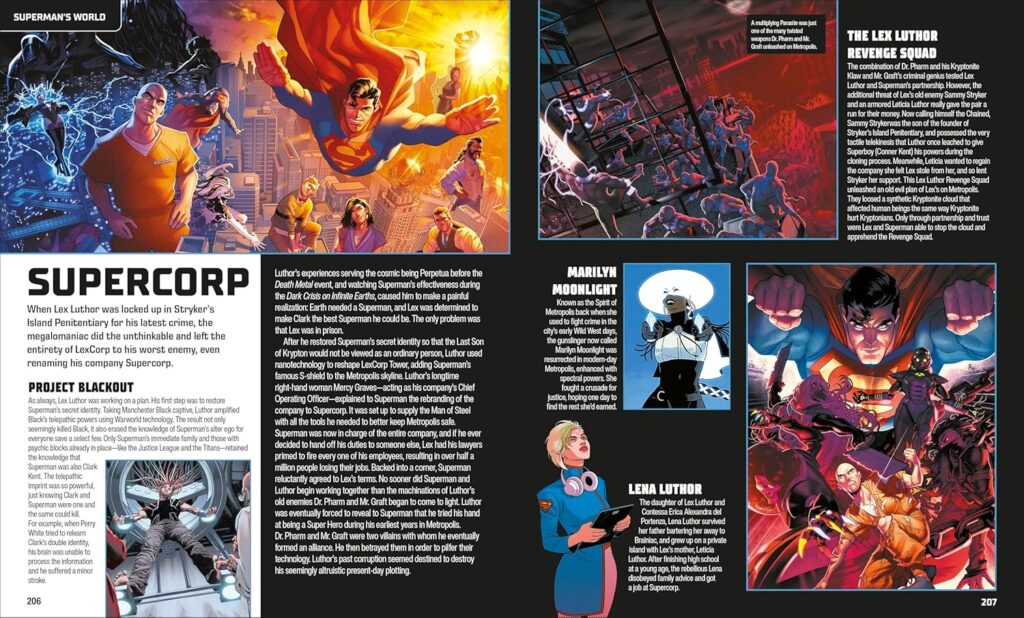
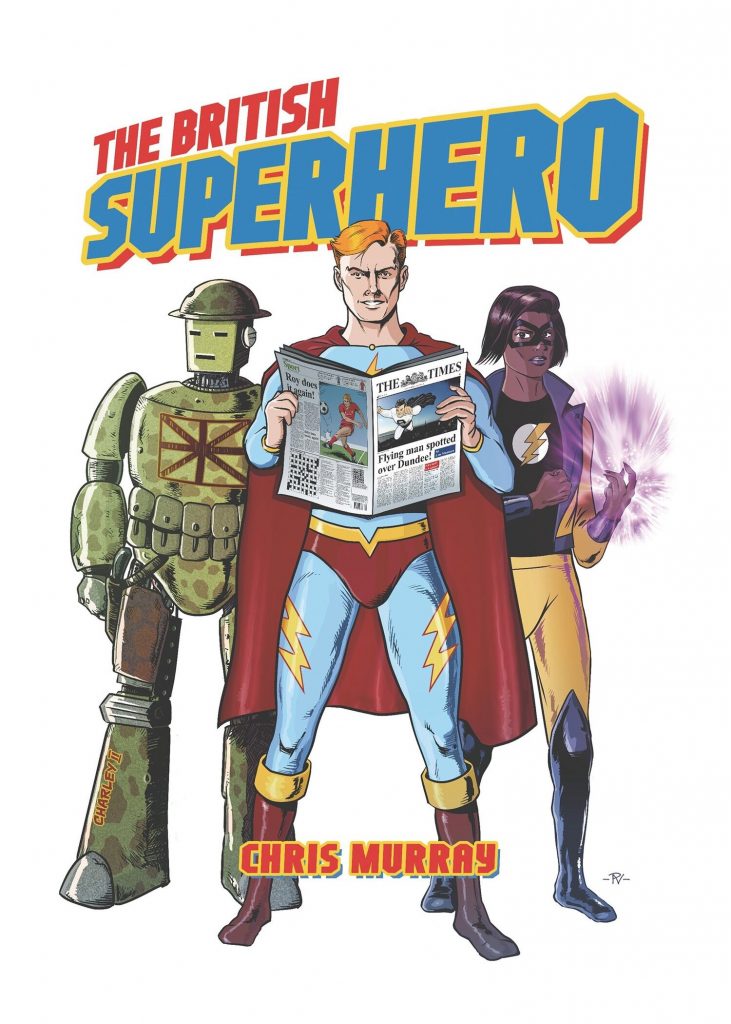
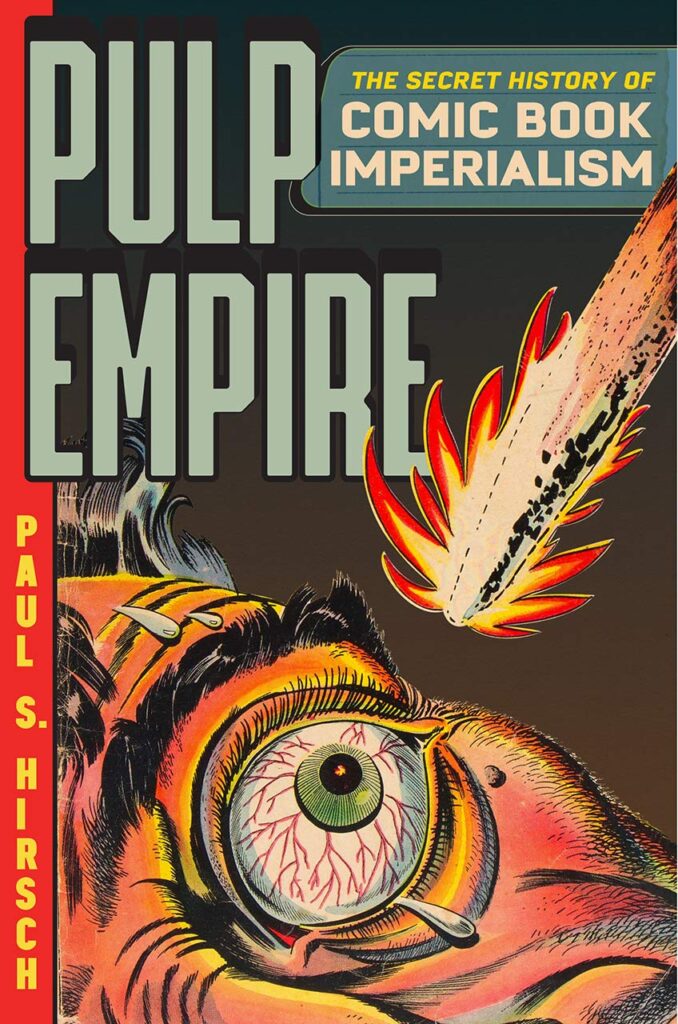
Fascinating piece, John, but I’m not convinced that first Triumph cover shows him flying, it looks totally like determined leaping!
Re: the mention of later UK reprints, maybe tweak that line with my pal Brian Clarke in it, as it gives the impression he, rather than the late Vanessa Morgan, edited The Super Heroes Monthly,
Thanks, Martin – updated faster than a… Vanessa’s contribution to British comics seems to have gone unrecognised outside our industry. I remember her cheerful and energetic presence at many a Westminster Comic Mart in the 1980s. Long overdue some sort of profile – although not from me, it needs someone who knew her better to write it.
As for the “leaping” not “flying”, I suppose it’s a matter of interpretation, but the background suggests that’s almighty big leap, compared to how Superman is seen jumping tall buildings in early Action Comics… I think John McCail deserves credit for inspiring Superman’s “flight” – worth reading Mark Seifert’s article on Bleeding Cool in full for the links that suggest the cover may have led to the full introduction of the power in the first radio serial, because of those involved in licensing the character at the time…
Oh that’s so true about Superman going far beyond tall buildings there, nice one John!
I would love to see a profile of Vanessa, she printed my first letters in her comics, which led to me getting a job with Brian years later, and was a great help with my NCTJ dissertation. What a lovely, talented person, I do wish I’d met her.
Wouldn’t the “Flying Superman cover” have simply been off-model at the time? It’s only with the change in Superman’s powers (which I recall hearing was thanks to the Fleisher cartoons) that it seems prescient. No criticism of the artistry here, just my observation.
Also, to second the point Martin Gray’s comment raised, it would be interesting to see coverage of the UK DC Super-Heroes title here. Not only did they have those lovely, original painted covers, but the annuals ran, I think, the first Superman and Batman stories by Alan Moore, Grant Morrison, Pete Milligan and Jamie Delano, albeit text stories. (Nothing wrong with text stories, I started on them too!)
The first mention of Superman flying is in the The Adventures of Superman radio series, which made its debut on 12th February 1940 on New York City’s WOR and was then syndicated, after this cover was published. As Mark Seifert says of the cover in his Bleeding Cool article (which I was loathe to quote too much from, but it seems I should expand the explanations here), “This is clearly not Superman leaping tall buildings. He’s flying up in the sky, high above the earth, using that now-familiar fist-first technique as he bursts towards us from the cover. Triumph 772 was published on August 5, 1939 — obviously well ahead of the debut of the Superman radio show on February 12, 1940.
“What happened here? Is it possible that the radio program writers were influenced by this cover from the UK? I think that’s very possible — and perhaps even likely.” [My emphasis).
Mark goes on to note The Adventures of Superman was developed by Robert Maxwell, a pulp writer who had worked on DC Comics owner Harry Donenfeld’s pulps years earlier, and DC’s press agent Allen Ducovny. “With Superman’s initial burst of success, Donenfeld brought Maxwell in to oversee Superman licensing and to get the character onto the airwaves — radio in 1940, and television in 1951.
“Given these wide-ranging responsibilities, it is not unlikely that Maxwell payed close attention to the finished product of Superman’s first international comics licensing deal in Triumph… by all accounts, [as noted here by The New York Times], Maxwell was hands-on and detail-oriented to the extreme, which is part of what made him good at his work on Superman licensing and media development, and the timeline and elements are in place for him to have seen Jock McCail’s flying Superman cover and taken notice of what made it so effective.”
In other words, despite the Triumph being an early example of overseas licensing, Mark argues it was not without oversight, and McCail’s interpretation perhaps inspired the flying powers of our favourite, original Kryptonian…